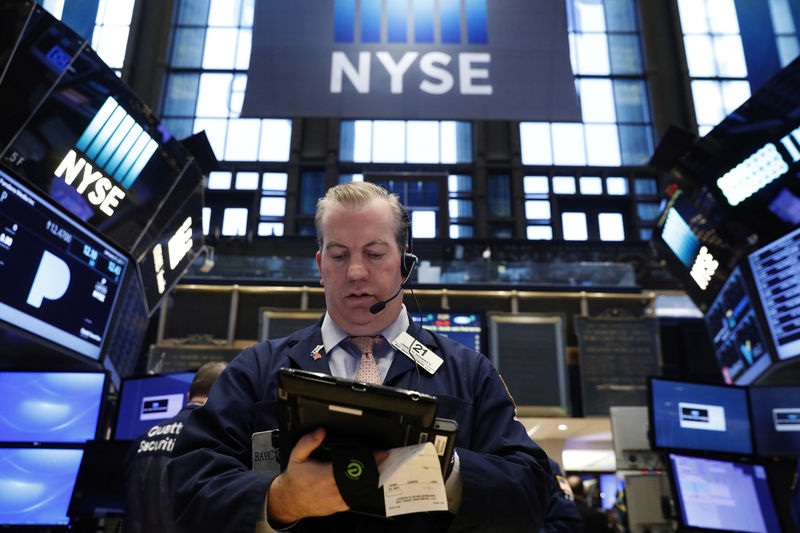By Sinead Carew
(Reuters) - Declines in energy and financial stocks weighed on the S&P 500 on Monday and helped stall the Dow's pursuit of the 20,000 milestone ahead of earnings season and expected U.S. policy changes under the Donald Trump presidency.
The Nasdaq notched a record high close, extending its bullish run with help from healthcare stocks.
The S&P's energy sector (SPNY) dropped 1.5 percent as oil prices slid on concerns that rising Iraqi exports and U.S. output could dampen the impact of a deal among major producers to limit output.
Elsewhere, investors were taking a breather ahead of fourth-quarter earnings and the Jan. 20 presidential inauguration.
The S&P 500 benchmark has risen more than 6 percent since the Nov. 8 election of Donald Trump, who has pledged tax cuts, lighter regulation and fiscal stimulus, but investors are now waiting to see if he can deliver on those promises.
"People are waiting for more information. We're waiting for political news, we're waiting for earnings. There's a lot of uncertainty out there. As the month goes on I expect we'll see some movement," said Peter Jankovskis, co-chief investment officer at OakBrook Investments LLC in Lisle, Illinois.
The financial sector (SPSY) fell 0.8 percent on Monday. It had risen almost 18 percent since the election, led by banking stocks.
Big banks will provide the first peek into how U.S. companies fared in the fourth quarter later this week. S&P 500 companies overall are expected to post a 5.8 percent increase in profit in the quarter, according to Thomson Reuters I/B/E/S.
"There is some hope we'll see some movement upward. Investors want to see some of those reports come out first," said Jankovskis.
Two-thirds of the 30 Dow Jones Industrial Average components fell, keeping the psychologically significant 20,000 mark at bay. Goldman Sachs' (N:GS) 0.8 percent fall was its biggest drag followed by International Business Machine's (N:IBM) 0.9 percent drop and Exxon Mobil's (N:XOM) 1.7 percent decline.
The Dow had come tantalizingly close to the milestone on Friday, hitting a peak of 19,999.63, as the S&P 500 and the Nasdaq also touched records after a late pop in tech stocks.
"Our view about the Dow (hitting) 20,000 is not a matter of if, but a matter of when," said Matt Jones, U.S. head of equity strategy at J.P. Morgan Private Bank in New York.
The Dow Jones Industrial Average (DJI) was down 76.42 points, or 0.38 percent, to 19,887.38, the S&P 500 (SPX) had lost 8.08 points, or 0.354856 percent, to 2,268.9 and the Nasdaq Composite (IXIC) had added 10.76 points, or 0.19 percent, to 5,531.82.
Eight of the 11 major S&P 500 sectors were lower.
The S&P's health sector (SPXHC) was the biggest gainer with Merck & Co. (N:MRK) the leading boost and Vertex Pharmaceuticals (O:VRTX) the biggest percentage gainer with a 4.4 pct jump after it issued guidance.
Nasdaq's biggest drivers in the healthcare sector were Ariad Pharmaceuticals (O:ARIA), which closed up 72.9 percent on a $5.20 billion buyout deal with Japan's Takeda 4502.T Incyte (O:INCY) with a 9.4 percent jump after it announced advancements in its cancer drug program with Merck.
Declining issues outnumbered advancing ones on the NYSE by a 1.77-to-1 ratio; on Nasdaq, a 1.45-to-1 ratio favored decliners.
The S&P 500 posted 6 new 52-week highs and no new lows; the Nasdaq Composite recorded 55 new highs and 16 new lows.

About 6.4 billion shares changed hands on U.S. exchanges on Monday compared with the 6.6 billion average for the last 20 sessions.